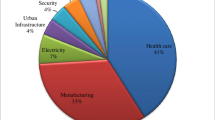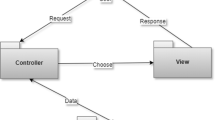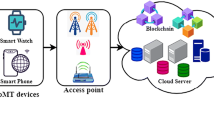Abstract
The e-health domain has the objective to assist and manage citizens’ health. It concerns many actors like patient, doctors, hospitals and administration. Current and forthcoming generations of application will be web based and will integrate more and more mobile devices. In such application domain, called m-health, dependability is a key notion. In addition, more and more functionalities of such systems will be implemented as services for providing qualities like adaptability and maintainability. This paper presents, through a case study, how we can analyse and design an application that controls the insulin injection and that is embedded in a mobile device belonging to an e-health Web Information System (WIS). In order to ensure the dependability of the control systems, we show how to use Coordinated Atomic Actions (CAA). CAAs provide well defined concepts for fault tolerance, error-detection and error recovery in a distributed context where competitive and cooperative concurrencies are considered. The combination of CAA and SOA at design level it is proposed, with the purpose of being able to design systems that are partially implemented using service-oriented technologies. We updated and used our implementation framework, called CAA-DRIP, which originally was not tailored for service-oriented mobile applications. Thus, in this paper, we also propose an adaptation of CAA-DRIP for mobile devices.
Similar content being viewed by others
References
Pelliccione P, Muccini H, Guelfi N, Romanovsky A (2007) Software engineering and fault tolerance. World Scientific, Series on Software Engineering and Knowledge Engineering (to appear)
Eysenbach G (2001). What is e-health. J Med Internet Res 3(2): e20
Randell B, Romanovsky A, Stroud RJ, Xu J, Zorzo AF (1997) Coordinated atomic actions: from concept to implementation. Technical Report 595
Xu J, Romanovsky A, Stroud RJ, Zorzo AF, Canver E and von Henke F (2002). Rigorous development of an embedded fault-tolerant system based on coordinated atomic actions. IEEE Trans Comput 51(2): 164–179
Di Marzo Serugendo G, Guelfi N, Romanovsky A, Zorzo A (1999) Formal development and validation of Java dependable distributed systems. In: Proceedings of ICECCS’99. pp 98–108
Romanovsky A, Periorelli P, Zorzo A (2003) On structuring integrated web applications for fault tolerance. In: Proceedings of ISADS. pp 99–106
Capozucca A, Guelfi N, Pelliccione P, Romanovsky A, Zorzo A (2006) CAA-DRIP: a framework for implementing coordinated atomic actions. In: The 17th IEEE International symposium on software reliability engineering (ISSRE), IEEE Computer Society, pp 385–394
National Institute for Health and Clinical Excellence (2003) Guidance on the use of continuous subcutaneous insulin infusion for diabetes. http://www.nice.org.uk (Technology Appraisal 57)
Capozucca A, Guelfi N, Pelliccione P (2006) The fault-tolerant insulin pump therapy. Rigorous engineering of fault-tolerant systems Lecture Notes in Computer Sciences, vol 4157. Springer, Berlin, pp 59–79
Randell B (1975). System structure for software fault tolerance. IEEE Trans Softw Eng SE-1(2): 220–232
Gray J and Reuter A (1993). Transaction processing: concepts and techniques. Morgan Kaufmann
Xu J, Romanovsky A and Randell B (2000). Concurrent exception handling and resolution in distributed object systems. IEEE Trans Parallel Distrib Syst 11(10): 1019–1032
Tartanoglu F, Levy N, Issarny V, Romanovsky A (2003) Using the B method for the formalization of coordinated atomic actions. In: Proc ICSE 2003 workshop on software architectures for dependable system)
Vachon J (2000) COALA : a design language for reliable distributed systems. PhD thesis, Swiss Federal Institute of Technology Lausanne Thesis no. 2302
Biberstein O, Buchs D, Guelfi N (1997) CO-OPN/2: a concurrent object-oriented formalism. In: Proc Second IFIP conf. on formal methods for open object-based distributed systems (FMOODS), Chapman and Hall, London, pp 57–72
Erl T (2006). Service-oriented architecture, concepts, technology and design. Prentice Hall, New Jersey
Java Technology. http://java.sun.com
Java ME Platform. http://java.sun.com/javame/
Sun Developer Network. http://developers.sun.com/techtopics/mobility/overview.html
J2ME RMI Optional Package Specification v1.0. http://java.sun.com/javame/reference/apis/
Shui A, Mustafiz S, Kienzle J, Dony C (2005) Exceptional use cases. In: MoDELS, pp 568–583
Dijkstra EW (1982) On the role of scientific thought. In: Selected writings on computing: a personal perspective. Springer, Heidelberg, pp 60–66
Parnas DL (1972). On the criteria to be used in decomposing systems into modules. Commun ACM 15(12): 1053–1058
Eclipse SDK. http://www.eclipse.org
EclipseME. http://www.eclipseme.org
Sun Java Wireless Toolkit for CLDC. http://java.sun.com/products/sjwtoolkit/
IEEE Std 610.12-1990 IEEE Standard Glossary of Software Engineering Terminology
Tao Group. http://tao-group.com/
University of Cambridge. (2006) http://www.admin.cam.ac.uk/news/press/dpp/2006110102
CLINICIP Consortium. (2007) http://www.clinicip.org/index.php?id=161
Medtronic, Inc. http://www.minimed.com/products/insulinpumps/
Insignia Jeode Runtime Environment, Insignia Solutions. http://www.esmertec.com
Avizienis A, Laprie JC, Randell B and Landwehr CE (2004). Basic concepts and taxonomy of dependable and secure computing. IEEE Trans Dependable Sec Comput 1(1): 11–33
Serugendo GDM, Fitzgerald J, Romanovsky A, Guelfi N (2007) A metadata-based architectural model for dynamically resilient systems. In: SAC ’07: Proceedings of the 2007 ACM symposium on applied computing, New York, ACM. pp 566–572
Author information
Authors and Affiliations
Corresponding author
Additional information
This research was supported by the Luxembourg Ministry of Higher Education and Research under the project number MEN/IST/04/04.
Rights and permissions
About this article
Cite this article
Balbastro, F., Capozucca, A. & Guelfi, N. Analysis and framework-based design of a fault-tolerant web information system for m-health. SOCA 2, 111–144 (2008). https://doi.org/10.1007/s11761-008-0026-3
Received:
Accepted:
Published:
Issue Date:
DOI: https://doi.org/10.1007/s11761-008-0026-3




